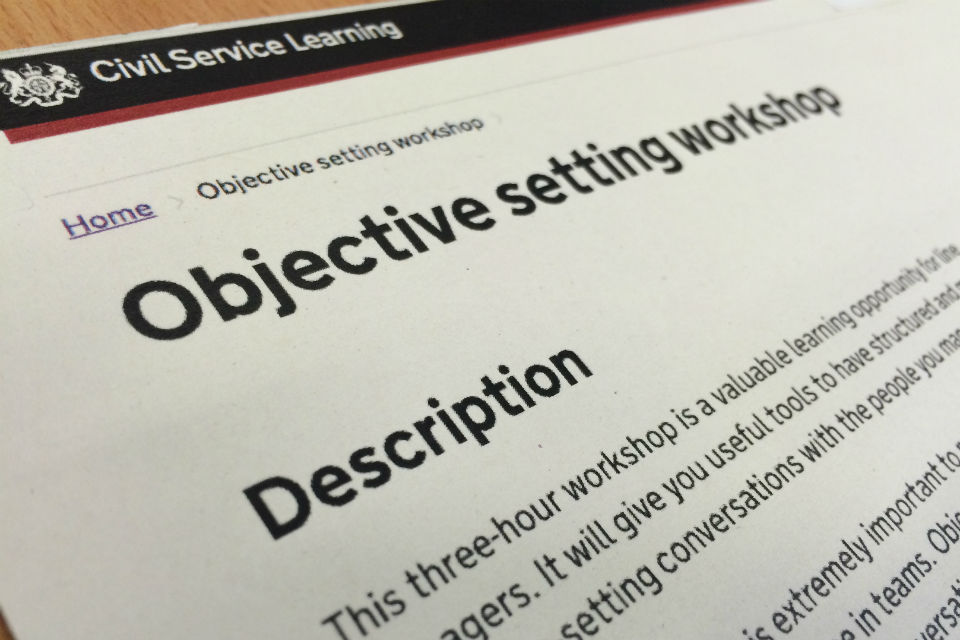
Alexander Hamilton was one of the founding fathers of the United States, and served as chief aide under George Washington, the first President. If you’re lucky enough to have seen the musical ‘Hamilton’, you’ll have heard his view that, “Men often oppose a thing merely because they have no agency in planning it.” As we come to the end of the operating year and start the new one, it strikes me that this has some relevance to our approach to setting our key work objectives.
Why do we need key work objectives? After all, most of us will still be doing the same job on 1 April as we were on 31 March – and we don’t just stop what we’re doing because our objectives have ‘expired’!
Most of us are clear on what we are responsible for and need to deliver. Setting our new objectives can, in many cases, involve a simple refresh of those we had in the previous year, rather than being a lengthy process.
Instead, we can see our objectives as an evolving thing. Our work programme is continuous and activities and projects don’t fit neatly in the 1 April to 31 March timeframe. Often, the work priorities for our team, department and the Civil Service will change over the year as we meet different challenges and government priorities, and our approach to our objectives should reflect this.
Ongoing dialogue
Coming back to Alexander Hamilton, if we are to feel interested in and accountable for our work, our objectives should not be something imposed on us from above. Setting our objectives can sometimes feel like a task to tick off a list, something we have to do as part of the performance management process. But they should be the product of an ongoing dialogue between us and our managers about what we need to deliver, how our work contributes to wider priorities, and how our development needs can be met. Understanding our objectives in this way gives us greater ownership of them, and makes us feel accountable for them.
I’ll be having just such a conversation with my manager, John Manzoni, in the coming week, to understand his priorities and how I can help deliver them through my role as Government Chief People Officer.
I know that one of those priorities is to deliver the Workforce Plan. To deliver improved outcomes for citizens, we need skilled people, led by effective leaders. This means attracting talented people from diverse backgrounds into the Civil Service as a great place to work, and giving opportunities for all our people to fulfil their potential.
To achieve this, we are improving the way we recruit, building clear profession-led career pathways, investing in our leadership, reviewing how we reward our people and focusing on actions to make the Civil Service the most inclusive employer in the UK. By getting the basics right and offering a tailored experience that rewards and drives our people to gain breadth of experience and depth of expertise, we will achieve a brilliant Civil Service.

Below are five key things to consider when setting your objectives:
1. Think about the big picture
It can sometimes be easy to focus on day-to-day tasks and lose sight of how your work links to the wider objectives of your department and the Civil Service. But every job makes an important contribution, and talking this through with your manager and making sure it is reflected in your objectives will help you stay focused and motivated.
2. Be clear about standards
We’ve all been in situations where, when it comes to the mid- and end-of-year discussions, there are different views of what you’ve been trying to achieve and what ‘good’ looks like. To avoid this, it’s worth making sure at the start of the year that you and your manager have a shared view of the key priorities and deliverables (the ‘what’) and the behaviours you need to demonstrate while delivering them (the ‘how'). Your department should have clear performance expectations, so make sure you are familiar with them.
3. Feel the stretch
Most of us will be familiar with the acronym SMART (specific, measurable, achievable, relevant, timebound) when it comes to setting our objectives. The ‘A’ that stands for achievable doesn’t have to mean easy! Ideally, your objectives will provide you with a good balance of work that you feel comfortable and confident with, together with some ‘stretch’ work that is a bit more challenging (perhaps based on your areas for development).
4. Review your progress
As I said above, setting our objectives shouldn’t be something we only do at the start of the year or if we change jobs. They should evolve and change as our work priorities change and work is dropped or introduced. Keep your objectives under review during the year to make sure they remain relevant and capture your current deliverables.
5. Make it personal
If your objectives are going to be meaningful and keep you focused, they need to be written in the style and language you feel most comfortable with. Some people prefer longer, more detailed objectives; others, short sharp ones. There is no right or wrong way, providing they are SMART, describe what you need to deliver and how you will meet them.
